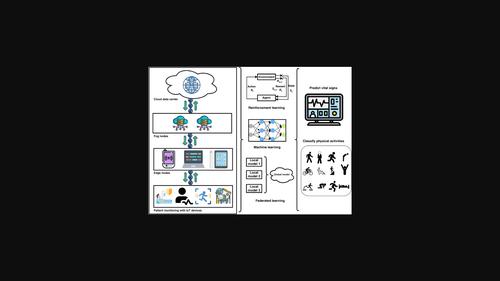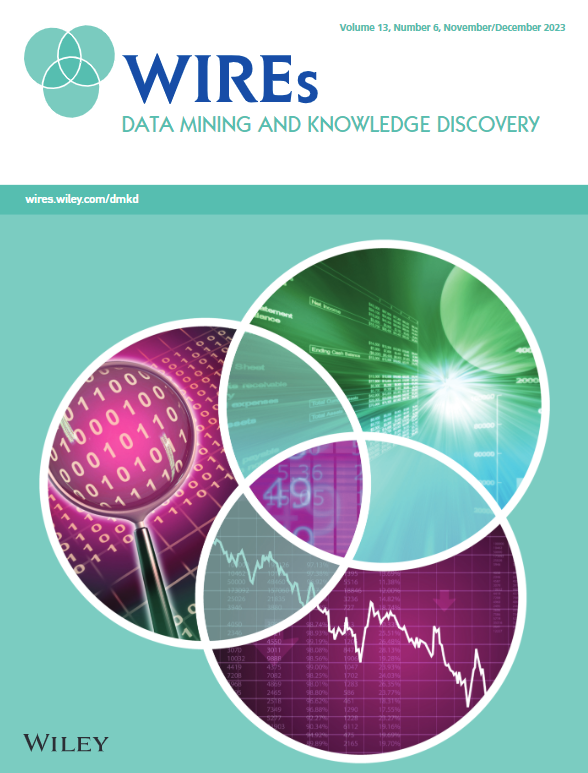使用人工智能的远程患者监护:现状、应用和挑战
IF 11.7
2区 计算机科学
Q1 COMPUTER SCIENCE, ARTIFICIAL INTELLIGENCE
Wiley Interdisciplinary Reviews-Data Mining and Knowledge Discovery
Pub Date : 2023-01-05
DOI:10.1002/widm.1485
引用次数: 33
摘要
人工智能(AI)在医疗保健领域的应用正在迅速增长。远程患者监测(RPM)是一种常见的医疗保健应用程序,可帮助医生监测远程慢性或急性疾病患者,老年人在家护理,甚至住院患者。人工病人监测系统的可靠性取决于工作人员的时间管理,这取决于他们的工作量。传统的病人监测包括侵入性方法,需要皮肤接触来监测健康状况。本研究旨在对RPM系统进行全面回顾,包括采用的先进技术,人工智能对RPM的影响,人工智能RPM的挑战和趋势。本文探讨了采用云、雾、边缘和区块链技术的物联网可穿戴设备和传感器支持的以患者为中心的RPM架构的优势和挑战。人工智能在RPM中的作用范围从身体活动分类到慢性病监测和紧急情况下的生命体征监测。本综述结果表明,人工智能支持的RPM架构已经改变了医疗保健监测应用,因为它们能够检测患者健康的早期恶化,使用联邦学习对个体患者健康参数进行个性化监测,并使用强化学习等技术学习人类行为模式。这篇综述讨论了将人工智能应用于RPM系统和实施问题的挑战和趋势。基于面临的挑战和趋势,分析了人工智能在RPM应用中的未来方向。本文章由计算机程序翻译,如有差异,请以英文原文为准。

Remote patient monitoring using artificial intelligence: Current state, applications, and challenges
The adoption of artificial intelligence (AI) in healthcare is growing rapidly. Remote patient monitoring (RPM) is one of the common healthcare applications that assist doctors to monitor patients with chronic or acute illness at remote locations, elderly people in‐home care, and even hospitalized patients. The reliability of manual patient monitoring systems depends on staff time management which is dependent on their workload. Conventional patient monitoring involves invasive approaches which require skin contact to monitor health status. This study aims to do a comprehensive review of RPM systems including adopted advanced technologies, AI impact on RPM, challenges and trends in AI‐enabled RPM. This review explores the benefits and challenges of patient‐centric RPM architectures enabled with Internet of Things wearable devices and sensors using the cloud, fog, edge, and blockchain technologies. The role of AI in RPM ranges from physical activity classification to chronic disease monitoring and vital signs monitoring in emergency settings. This review results show that AI‐enabled RPM architectures have transformed healthcare monitoring applications because of their ability to detect early deterioration in patients' health, personalize individual patient health parameter monitoring using federated learning, and learn human behavior patterns using techniques such as reinforcement learning. This review discusses the challenges and trends to adopt AI to RPM systems and implementation issues. The future directions of AI in RPM applications are analyzed based on the challenges and trends.
求助全文
通过发布文献求助,成功后即可免费获取论文全文。
去求助
来源期刊

Wiley Interdisciplinary Reviews-Data Mining and Knowledge Discovery
COMPUTER SCIENCE, ARTIFICIAL INTELLIGENCE-COMPUTER SCIENCE, THEORY & METHODS
CiteScore
22.70
自引率
2.60%
发文量
39
审稿时长
>12 weeks
期刊介绍:
The goals of Wiley Interdisciplinary Reviews-Data Mining and Knowledge Discovery (WIREs DMKD) are multifaceted. Firstly, the journal aims to provide a comprehensive overview of the current state of data mining and knowledge discovery by featuring ongoing reviews authored by leading researchers. Secondly, it seeks to highlight the interdisciplinary nature of the field by presenting articles from diverse perspectives, covering various application areas such as technology, business, healthcare, education, government, society, and culture. Thirdly, WIREs DMKD endeavors to keep pace with the rapid advancements in data mining and knowledge discovery through regular content updates. Lastly, the journal strives to promote active engagement in the field by presenting its accomplishments and challenges in an accessible manner to a broad audience. The content of WIREs DMKD is intended to benefit upper-level undergraduate and postgraduate students, teaching and research professors in academic programs, as well as scientists and research managers in industry.
 求助内容:
求助内容: 应助结果提醒方式:
应助结果提醒方式:


